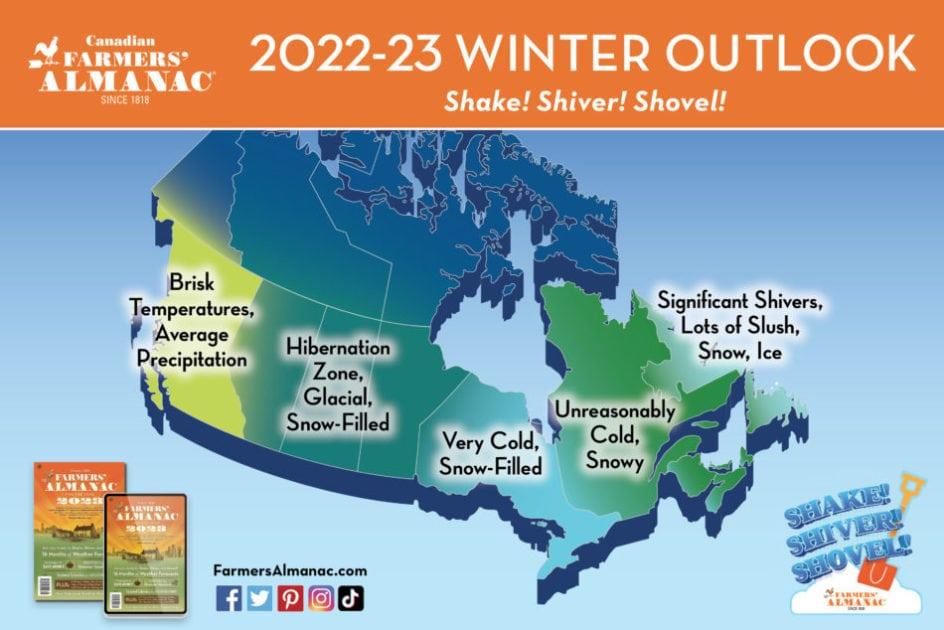The publication describes the region as a “hibernation zone”
By Diego Flammini
Staff Writer
Farms.com
It’s going to be quite cold this winter across Manitoba, Saskatchewan and Alberta, the Farmers’ Almanac says.
The annual publication recently put out its winter 2022-23 with a subtitle of “Shake! Shiver! Shovel!”
For the Prairies, the forecast describes the region as a “hibernation zone, glacial (and) snow-filled.”
“During the month of January, Canadians may see some of the coldest arctic outbreaks in recent years with temperatures reaching as low as -20 to – 40C,” the Almanac states, adding western Canada “will be the hardest hit this year with tons of snow in both January and February.”

Farmers' Almanac photo
Animals like bears, squirrels and hedgehogs stuff themselves with food before finding a warm place to tuck in for the winter months until the following spring.
Perhaps some Prairie residents may want to channel their inner hibernator.
In fact, researchers at the University of Oxford are looking into whether humans could actually hibernate in some capacity.
“It’s still an open question but, at least in theory, we can’t exclude that it might be possible,” wrote Vladyslav Vyazovskiy, an associate professor of neuroscience.
For those who enjoy skiing, they may want to look further west to British Columbia.
The Farmers’ Almanac is calling for brisk temperatures and average levels of precipitation.
“Skiing should be decent this upcoming season,” the publication says.
The first day of winter is Wednesday, Dec. 21., so there’s still plenty of time to pick up winter essentials like hot chocolate and a good shovel.